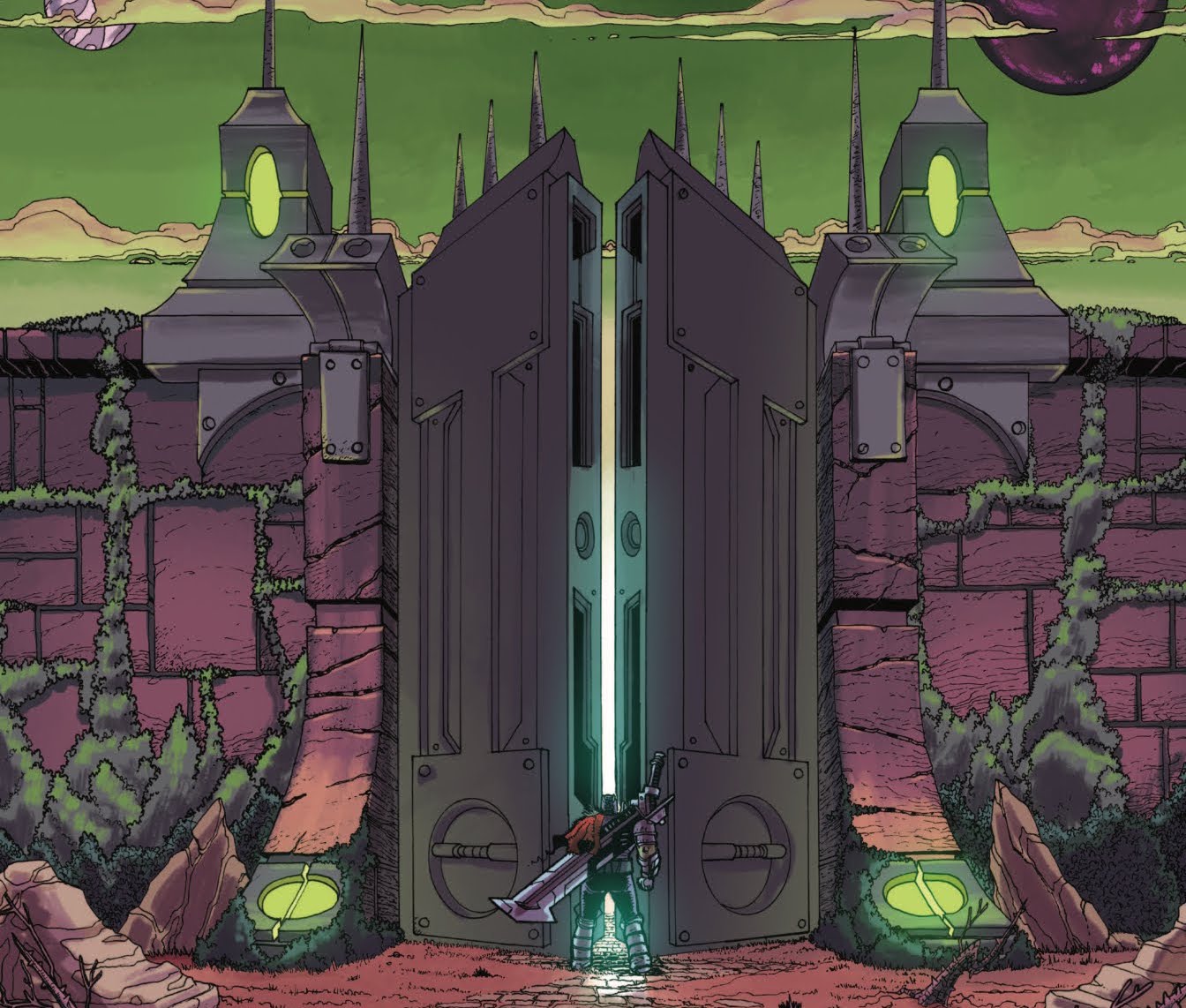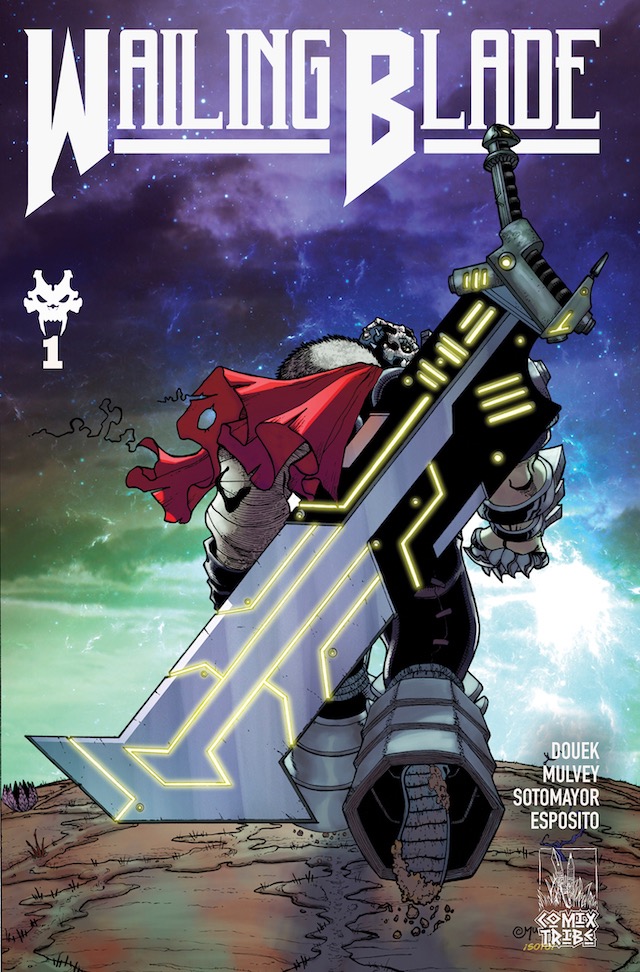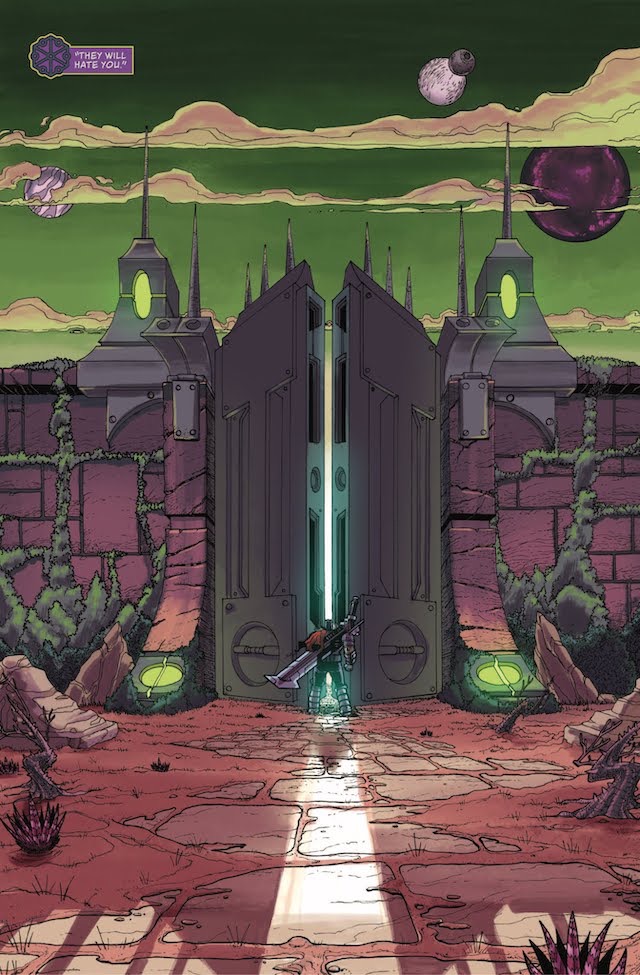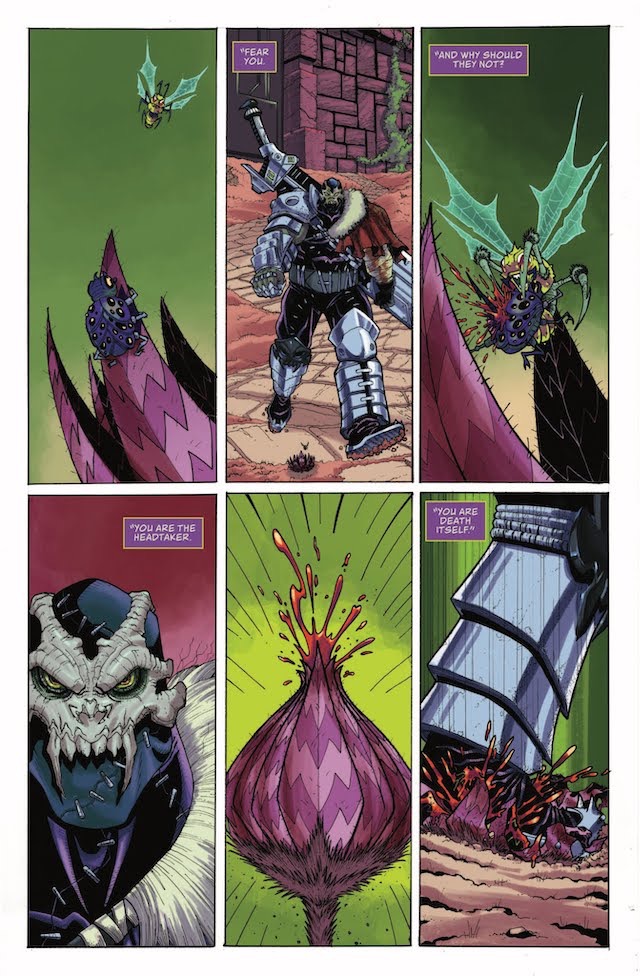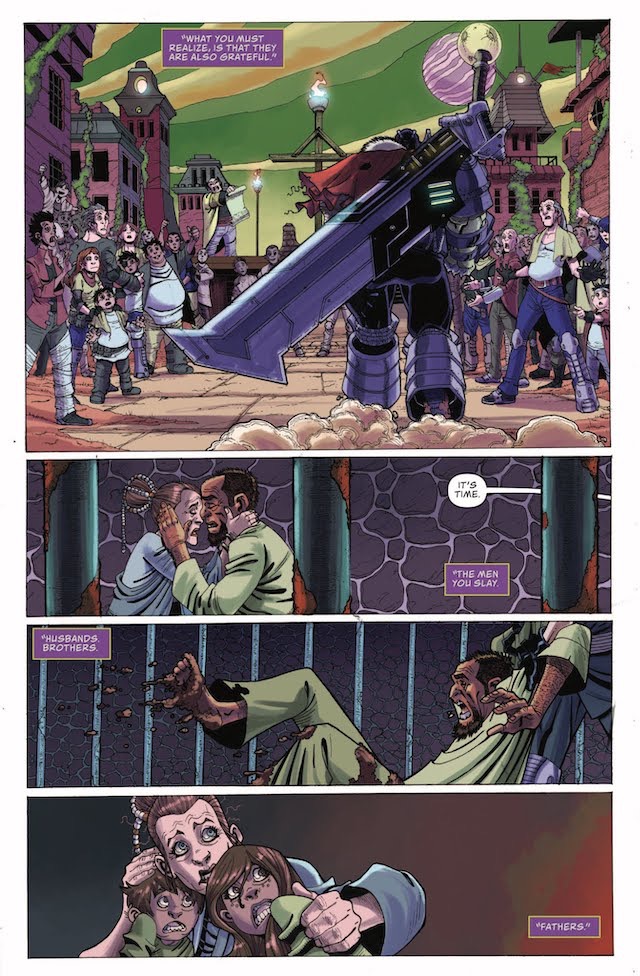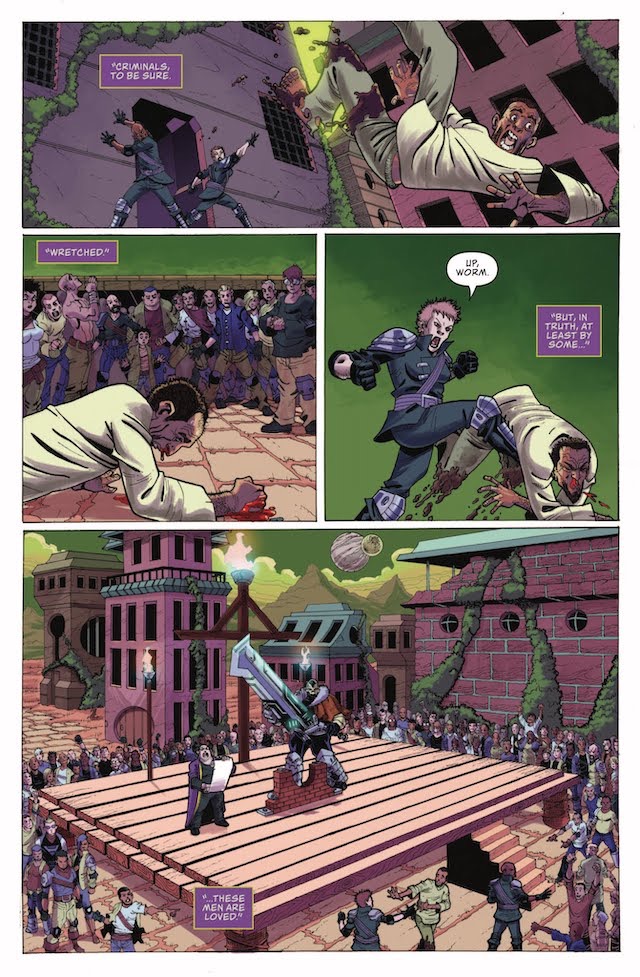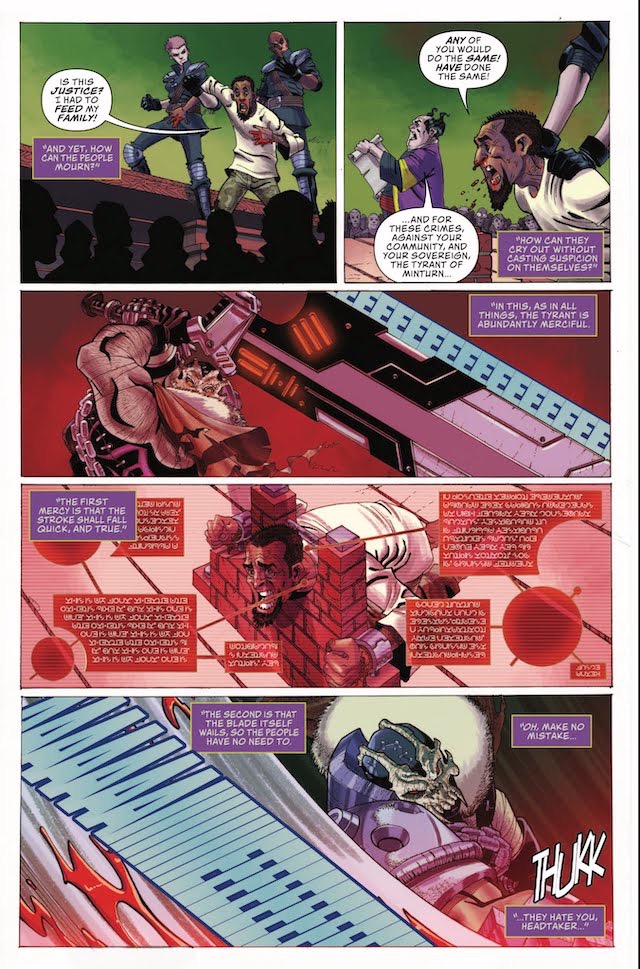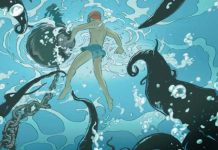I’ve been a fan of Rich Douek ever since reading Gutter Magic and a friend soon after. Douek created a very tangible world in the space of Gutter Magic’s four issues and expanded on it in an anthology issue featuring some of the industry’s best artists. But, even though it received critical acclaim upon its release in 2016, he’s only now dropping his next creator-owned project Wailing Blade from ComixTribe which is on Kickstarter. I discussed with Rich the writing process for Wailing Blade, how even the best-laid plans in comics tend to go awry, and what he’s learned from those experiences.
All art, unless otherwise noted, by Joe Mulvey, Chris Sotomayor, and Jules Rivera.
The opening to a comic is when you either draw readers in or push them away. How carefully do you consider those first few pages of a comic to make a strong impression?
I consider them very carefully, because, exactly as you said, that’s what draws readers in. I know from my own habits at a comic shop, even if I flip through the whole thing and it seems interesting, it’s reading those first few pages that really seals the deal when it comes to picking it up or putting it down.
Do you find narration a particularly effective way to start a story in comics?
I think it’s a great way to bring people into the world of a story – whether it’s first-person narration, or more of a higher-level, omniscient narration. Some of the best stories I’ve heard have been told around a campfire, or over some drinks, and the fact that someone is narrating is a huge part of it. I think, like anything, it can be done well or done poorly, but I think it’s a great technique.
Both of your creator-owned books involve a lot of lore. What draws you to those kinds of stories?
When I was first getting into fantasy and science fiction, one of my favorite parts of reading those books were looking at the maps. Whether it was Middle Earth, The Young Kingdoms, or Hyboria, I loved poring over them and imagining all the things going on in the different parts of the world, even the ones the story itself didn’t touch on. I think what really draws me in is a sense that these are living, breathing places, with lots of things going on that don’t directly revolve around the main characters. It helps transport me to those places when I read, and that’s something I’d like to achieve when people encounter my work.
Comics are, of course, inaudible. What’s the advantage of leaving the Wailing Blade‘s precise sound to the readers’ imagination?
The practical advantage is, of course, that I don’t have to sit with a sound engineer at a mixing board to record it, haha. But for real, I think it’s another thing that helps readers get into the story. A lot of comics reading is filling in the little blanks that happen between what we’re shown – while we could be looking at say, 6 panels making up a fight scene, in our minds we’re experiencing it as a fluid fight – we’re filling the gaps left by the gutters with our own interpretation. And I think that really helps us, as readers, engage with the story more. Imagining what the blade sounds like in your head has a similar effect, I think.
Do you have your own idea of what it sounds like beyond what’s described in the first issue?
In my head, it’s like a helicopter rotor winding up, with some screaming mixed in. Maybe some heavy metal guitars, too.
Joe Mulvey has a much more expressive style than the previous artist attached. How did you take advantage of it in your script?
One of the things I love about Joe’s art is how expressive and kinetic it is. I know that whatever I ask for, no matter how over the top it is, he’ll find a way to deliver it. So that’s an advantage right there – there’s never a moment where I need to second guess what I’m writing because I know Joe can carry it through. So the fights in Wailing Bladeare a result of neither of us holding back when it comes to the action. The crazier the idea, the more we like it, and look for ways to render it.
Since he’s largely written what he’s drawn, did Joe contribute to the story of Wailing Bladeonce joining the project?
Joe has brought so much to the project, it’s impossible not to call it ours now. He’s brought the world I conceived to life, visually designing everything from the cities, to the clothing, to the flowers and trees that populate the world. I always welcome his input on the storyline and characters as well, and he’s definitely made contributions there as well.
Coloring is usually done by just one creator. How did Chris Sotomayor and Jules Rivera collaborate for the series?
Originally, we had planned to work with Jules solo, but due to a number of factors, she was unable to continue on the book. In casting around for a new colorist, we went to Soto for advice (he knows a ton of great people), and he offered to do the project himself because he really liked what he saw. Not ones to let an opportunity like that slip by, we brought him on immediately. We love the work Jules did, and even though we were unable to finish the book with her, we wanted to preserve it and make it part of the book instead of just having Soto recolor her pages. However, Soto was able to take the pages Jules had completed, and use them as a foundation to approach the book with, as far as the palette, and the rendering style he chose.
What makes ComixTribe a good partner for the series?
Comixtribe is a smaller publisher, and they don’t put out a ton of books every month. They’re a tightly knit crew, and I think the advantage of all that is that there’s absolutely no way Wailing Blade is going to get lost in the shuffle as far as they’re concerned. Where with a larger company, we’d be one of many books they were pushing out, with Comixtribe, I know we are going to have their full attention to making sure the book gets out there. Comixtribe is also well known for running high-quality Kickstarters for their books, with tons of cool stuff for collectors, and we have a campaign for Wailing Blade live right now on Kickstarter.
Even though Gutter Magic received wide acclaim, this is your first new series in almost 6 years. Is that a testament to how difficult it is to get comics in motion and to stay in motion?
Yes, definitely. I focused on Gutter Magica lot in the early years of my career, maybe a little too much, even, as opposed to getting new stuff off the ground. But as I was self-publishing Gutter Magic, and then later working with IDW, I had been trying to get new series pitches underway, and it’s a long process even when everything was going smoothly. Wailing Blade itself suffered the loss of an artist who had committed to the project and other delays as I had to shift my focus towards releasing Gutter Magic to a wider audience. But, I had a lot of passion for the project, and once I pitched Joe on it, he did too. Once he was on board, things kicked into high gear, and here we are.
Do you have a number of projects percolating to accommodate for potential setbacks?
I always have things percolating, but I wouldn’t say it’s to accommodate setbacks. It’s more that I just have a lot of stories I want to tell. For some of them, the timing is right, and for some of them, it’s more challenging, and they have to go on the back burner for a while. But, since Gutter Magicwas released 2 years ago, I’ve been hustling non-stop to get more projects going – and Wailing Bladeis just the first one you’ll be seeing this year.
Given how difficult it is to make comics and then get them published, how do you take advantage of whenever you have the opportunity?
I think the trick is to, as much as you can, always be working on something, and just keep putting stuff out there in whatever way you can. Maybe this time it’s for a Kickstarted anthology story. Maybe next time it’s with a small publisher. Maybe the time after that is with an even smaller one. But the point is, the more you get out there, the more you’re giving opportunities a chance to find you. And conversely, it’s much easier to get opportunities once you show you are able to handle similar things. But as far as taking advantage of opportunities when they come up, it’s pretty simple – when you get the chance, you have to throw yourself into it, and do the best job you can.
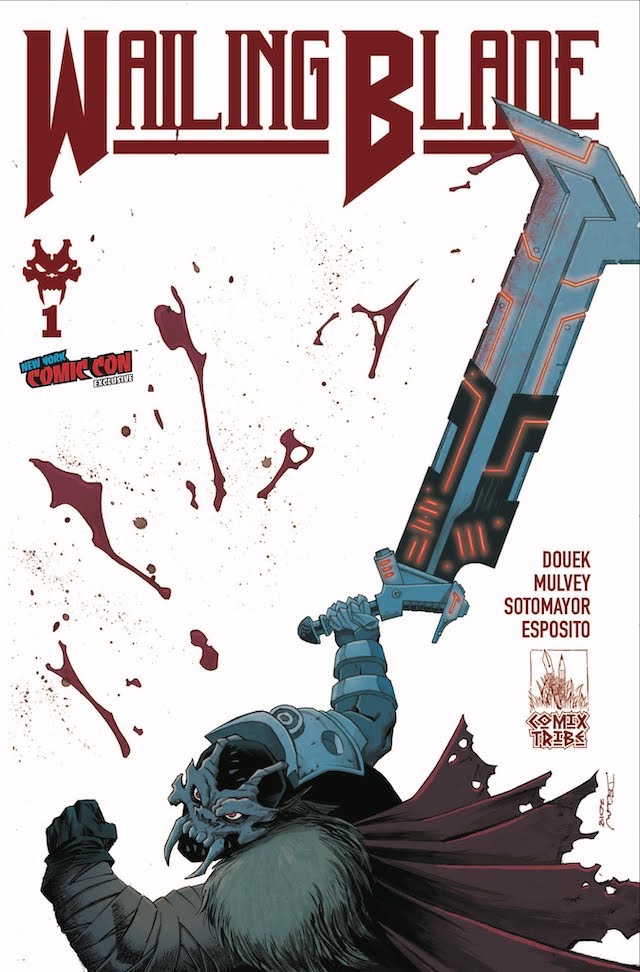
Go back Wailing Blade on Kickstarter and follow Rich on Twitter and Tumblr.
Matt Chats is an interview series featuring discussions with a creator or player in comics, diving deep into industry, process, and creative topics. Find its author, Matt O’Keefe, on Twitter and Tumblr. Email him with questions, comments, complaints, or whatever else is on your mind at [email protected].


